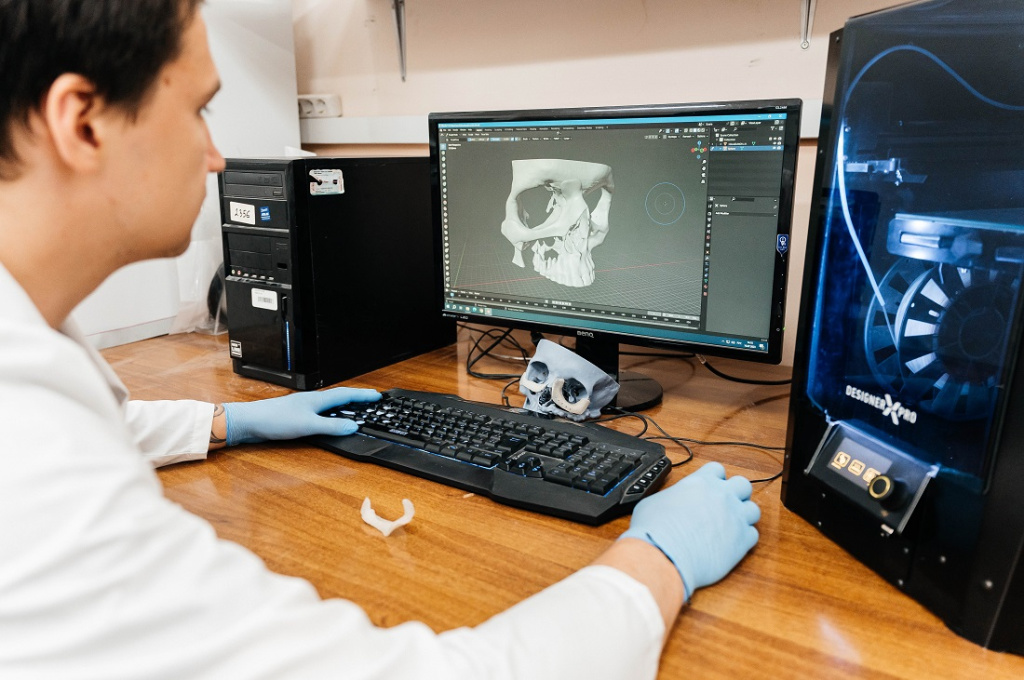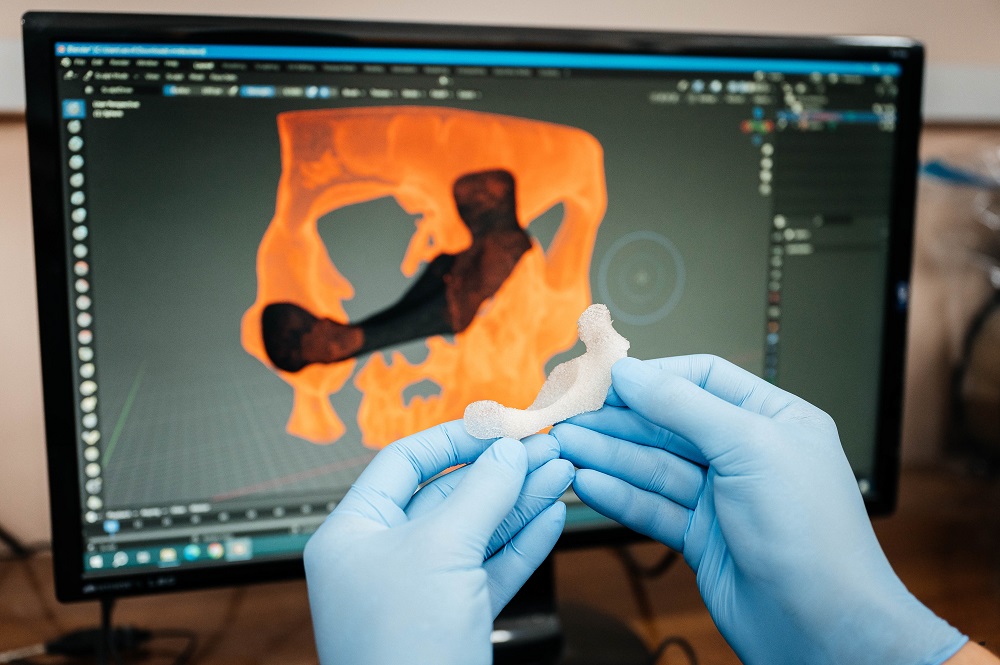Implants are manufactured from fluorine-containing polymers by 3D printing based on computer tomography data. The technology is fully domestic: from raw materials to the manufacturing of ready-to-use implants. The research is supported by the federal program Priority 2030.
Fluoropolymers produced by the Russian company GaloPolymer (Kirovo-Chepetsk) and satisfying all the requirements, are used to manufacture the implants.
The process of implant manufacturing implies a full production cycle: from preparation of polymer powder to quality control of the printed product. It should be noted that along with domestic raw materials, we also use domestic equipment. Generally, head and neck cancer pathologies are treated with the use of individual implants made of titanium. However, they are usually manufactured from imported raw materials, and the suppliers have withdrawn from Russia. Titanium implants are not so manageable; they are hard to work with in the clinical setting, especially if precise fitting of such an implant is required in the course of surgery. Moreover, titanium implants are very costly, which, of course, reduces the number of patients benefiting from quality health care. Today, together with our partners from the Cancer Research Institute, we are working on unique methods and technologies that could help a great number of people,

Fluoropolymer-based implants have a number of advantages. They are lightweight, quickly integrate into the body, and are not contraindicated for radiation therapy. In addition, 3D printing technology permits a customized approach to each clinical case.
Following the research findings, the scientists have conducted limited clinical trials of the products. Over six months, three patients with malignant tumors of the maxillofacial area, at stages three to four, in particular, with bone defects in the upper jaw, have undergone surgery with the use of fully domestic implants.Implants are manufactured in the preoperative period based on a patient's CT scan data, provided by the Cancer Research Institute. Basically, we simulate the future operation together with the surgeon to ensure optimal integration of the implant into the human body. To solve this challenging task, we perform full-scale studies of physical and chemical properties of the implant to achieve a certain porosity and structure. Then it is followed by a full research cycle on cells and laboratory animals. Today we know exactly how to make an implant so that it integrates smoothly into the body with no negative effects,
Maxillofacial area is quite a complex anatomical structure in terms of bone walls and architectonics. Therefore, its reconstruction using the patient's own tissues is commonly a challenge. For this reason, customized implants could be the optimal solution. This is our first experience with such products, but we are quite satisfied with the material and the implant. The products are lightweight, they can be made to fit in the operation theater, and they are easy to fit. In addition, we can create implants of different porosity, thus changing their properties, such as mobility, flexibility and others for each particular patient. For example, nasal bones require thinner and more flexible products. Now, we are monitoring the dynamics and planning to run further tests, modify the products and scale up the technology,

